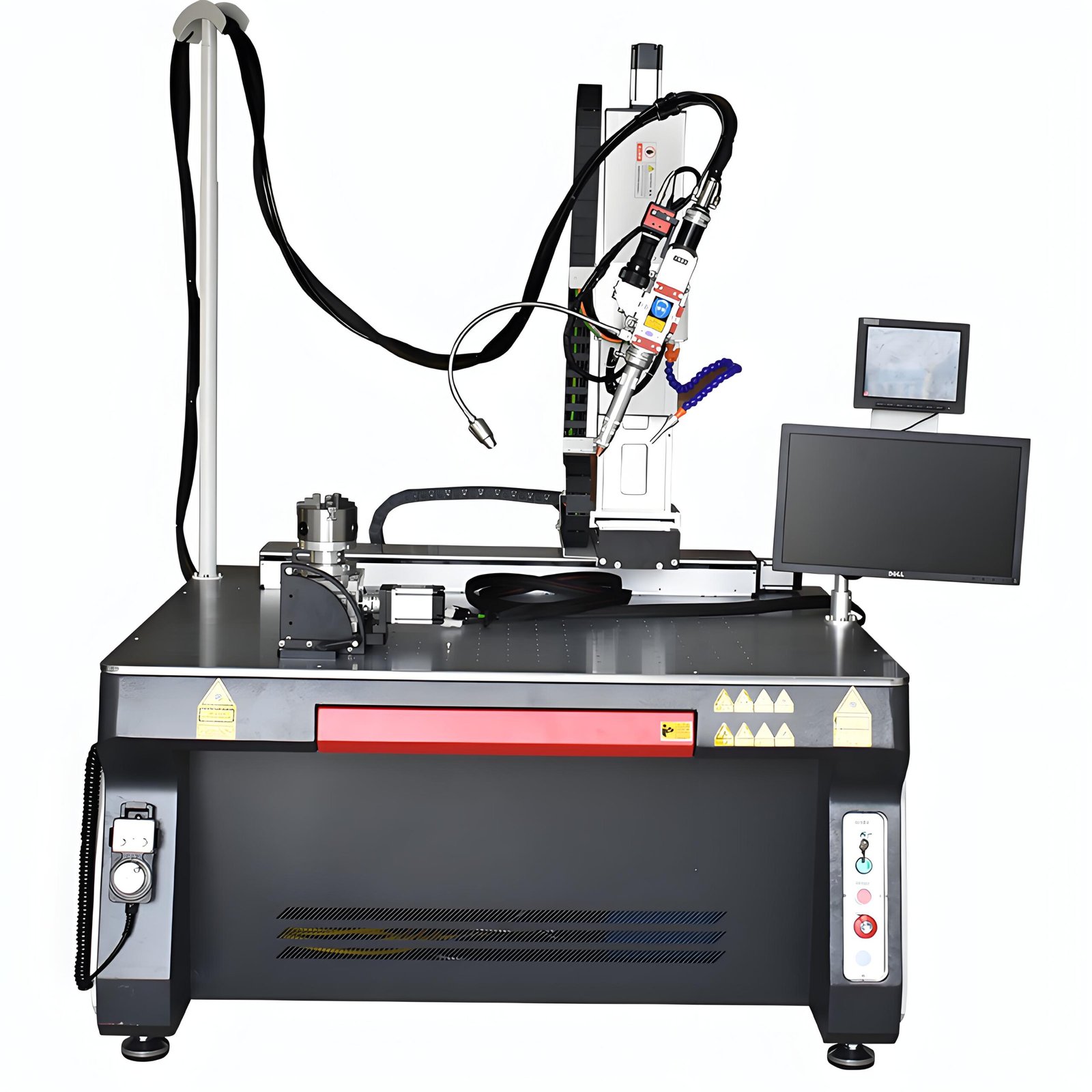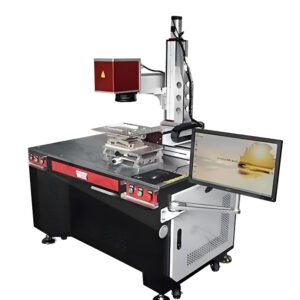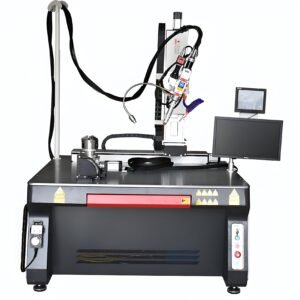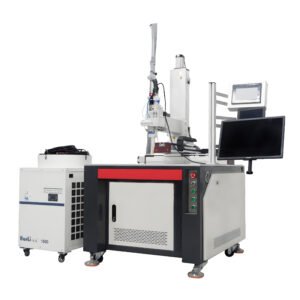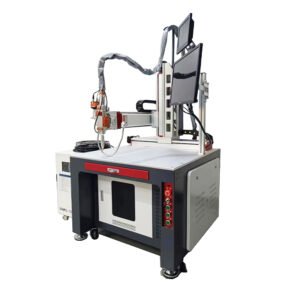Description
Multi-axis Platform Fiber Laser Welding Machine Product Introduction
The Multi-Axis Fiber Laser Platform Welding Machine is an advanced laser welding system that integrates precision motion control, high-efficiency welding performance, and automation flexibility. It is equipped with a stable continuous or QCW fiber laser source and a multi-axis motion platform (customizable in 3-axis, 4-axis, 5-axis, or 6-axis), enabling high-quality welding of complex structures, irregular shapes, and multi-curved surfaces.
With sub-millimeter repeatability, this system features an industrial-grade PC control unit and intelligent welding path editing software, supporting CAD file import and automatic path generation. Optional configurations include a visual positioning system and rotary axis to handle more customized applications.
This machine is ideal for high-precision industries such as mold repair, medical device manufacturing, microelectronics, and telecom components. Whether used as a standalone unit or integrated into automated production lines, it enhances welding consistency, product quality, and overall productivity — making it a reliable solution for modern precision manufacturing.
Multi-axis Platform Fiber Laser Welding Machine Core Advantages
Multi-axis linkage: Supports 3 to 6 axes for automated and complex welding paths
Stable fiber laser source: Continuous output for smooth and uniform weld seams
High-precision platform: Sub-millimeter accuracy for delicate parts
Smart control system: Supports CAD import, path programming, and automatic tracking
Modular design: Easy maintenance and integration into automated production lines
Multi-axis Platform Fiber Laser Welding Machine Application Scenarios
Mold repair and micro-structure welding
Medical device components (e.g., stainless forceps, stents)
Precision electronics (battery casings, sensor housings)
Telecom housing and connector welding
Small-batch automated production line operations
Multi-axis Platform Fiber Laser Welding Machine Demo
This video showcases the JOYLASER Multi-Axis Platform Fiber Laser Welding Machine, featuring multi-axis motion for precise welding of complex 3D parts. Equipped with a high-power fiber laser and custom fixtures, it supports stainless steel, aluminum, copper, and alloys. The system allows CAD path import and robotic arm integration, producing smooth, spatter-free welds. Widely used in automotive parts, new energy battery trays, and sheet metal fabrication, it boosts efficient, intelligent manufacturing.
Multi-axis Platform Fiber Laser Welding Machine Technical Parameters
| Parameter | Specification |
|---|---|
| Laser Type | Continuous Fiber Laser / QCW Optional |
| Laser Power | 1000W / 1500W / 2000W / 3000W |
| Axis Quantity | 3-Axis / 4-Axis / 5-Axis / 6-Axis |
| Positioning Accuracy | ±0.02 mm |
| Repeatability | ±0.01 mm |
| Platform Size | Customizable: 300×300mm to 1200×1000mm |
| Cooling System | Water Cooling |
| Control Software | Industrial PC with Welding Path Editor |
| Optional Features | CCD Visual Positioning, Rotary Axis |
Multi-axis Platform Fiber Laser Welding Machine Customer Cases
Case 1: German Automotive Parts Manufacturer
By using a 4-axis multi-axis fiber laser welder with vision positioning, the client achieved automated welding paths with ±0.02mm accuracy, 25% faster production, and 98.5% yield. They reported significant reduction in manual errors and improved stability.
Case 2: Indian Medical Device Manufacturer
Using QCW laser and CCD vision system, precise welding of tiny titanium and stainless parts was achieved with smooth seams and minimal distortion, improving productivity by 30% and reducing scrap below 0.5%. The client praised its suitability for medical applications.
Case 3: Chinese Electronics Manufacturer
With an auto-loading multi-axis fiber laser welder, the client automated batch welding of aluminum and stainless steel parts, achieving smooth welds, a 40% shorter cycle time, and integration with MES for enhanced quality control.
Multi-axis Platform Fiber Laser Welding Machine Welding Example
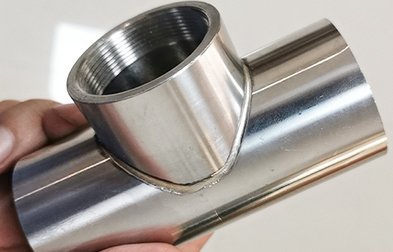
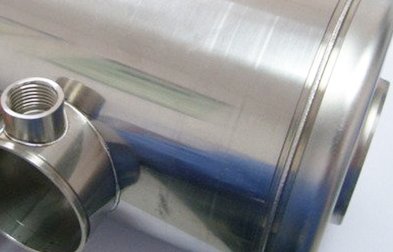
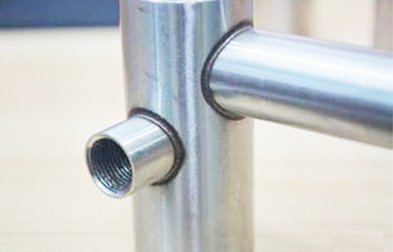

Multi-axis Platform Fiber Laser Welding Machine FAQ
Q1: What materials can the Multi-Axis Fiber Laser Platform Welding Machine weld?
A1: It can weld stainless steel, carbon steel, aluminum alloy, copper, titanium, and composite metals, covering most industrial applications.
Q2: Does the multi-axis system support automatic positioning and path tracking?
A2: Yes, it features a vision recognition system that supports automatic positioning, path planning, and trajectory tracking for enhanced welding precision.
Q3: Is the machine suitable for welding complex 3D parts?
A3: Yes, it supports spatial path control for welding irregular, curved, and stepped 3D structures with high accuracy.
Q4: How is the machine maintained? Is it difficult?
A4: The machine adopts a modular structure. Routine maintenance involves cleaning optics, checking the water-cooling system, and updating software—simple and low-cost.
Q5: Can the machine be integrated into automated production lines?
A5: Yes, it supports seamless integration with robots, loading/unloading systems, and MES platforms via standard communication interfaces.
Q6: What control systems are supported by the machine?
A6: It supports custom CNC systems and industrial HMIs, compatible with multiple CAD/CAM path inputs. The interface is intuitive and user-friendly.
Q7: Is training required for operators?
A7: We provide detailed manuals and remote/on-site training. Most operators can learn to operate the machine within 1–2 days.
Q8: Will welding cause thermal deformation?
A8: The laser’s heat-affected zone is minimal and controllable, effectively preventing overheating and deformation common in traditional welding.
Q9: Which industries is this machine suitable for?
A9: It is widely used in electronics, precision hardware, medical devices, aerospace parts, battery welding, mold repair, and other high-precision manufacturing fields.
Q10: What is the service life of the machine?
A10: With proper maintenance, the laser source lasts over 100,000 hours, and the whole system operates stably for more than 5 years—ideal for long-term industrial use.
111-1024x458.png)
